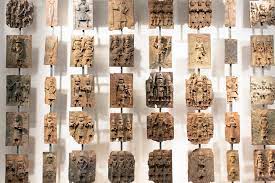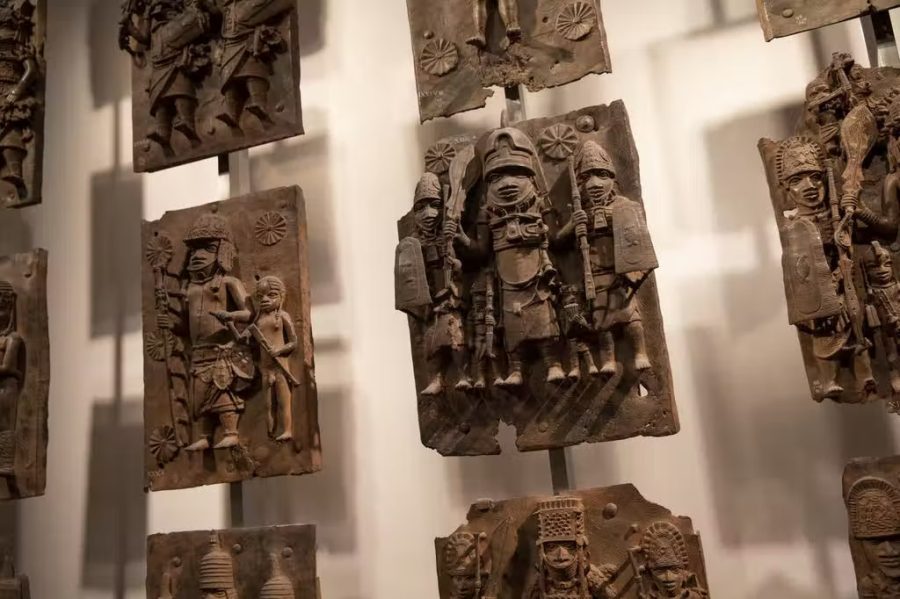The Bronze Diary of the Benin Empire

May 16, 2023
The civilization that created the artifact:
The bronze diaries were created from at least the 16th century onwards in the West African Kingdom of Benin by specialist guilds working for the royal court of the Oba (king) in Benin City. The ancient Benin people were practicing voodoo as well as they were animalists. The original people of Benin were ruled by ogisos and they called their land igodomigodo which wielded much influence and gained much popularity as good leaders, but as time went on their leaders were called oba’s and developed monarchy.
How the artifacts were acquired:
They were looted by British colonial troops who invaded Benin City, the kingdom’s wealthy capital, in 1897.
Importance of the artifact:
Initially many pieces were commissioned specifically for the ancestral altars of past Obas and Queen Mothers. They were also used in other rituals to honor the ancestors and to validate the accession of a new Oba. Currently the pieces show a glimpse of what life was like back in the reign of the Edo empire.
These artifacts are known as the Benin bronzes and they were created mostly from the 13th to the 16th century. The Benin bronzes (made of brass and bronze) are a group of sculptures which include elaborately decorated cast plaques, commemorative heads, animal and human figures, items of royal regalia, and personal ornaments, they range from different sizes and dimensions.These artifacts were created by an unknown artist who hails from Edo state in modern day Nigeria. Benin’s culture is as rich and diverse as its landscape, music and art is of utmost importance in the city. Benin was fueled by its lively trade and artisans from which a trade relationship was established between the people of Benin and the Portuguese.
These pieces were commissioned specifically for the ancestral altars of past Obas and Queen Mothers. They were also used in other rituals to honor the ancestors and to validate the accession of a new Oba. Currently it shows a glimpse of what life was like back in the reign of the Edo empire, it was also some sort of Diary for the people of ancient Edo as important events were carved as sculptures.currently it provides an important historical record of the Kingdom of Benin, it proves the existence of the Benin kingdom to the people of great Britain and exposes a bit of the culture of the people of Benin. About seventy-two of the articles are to be sent to Nigeria by museums in Germany and France. But the British who are in possession of over nine thousand refuse to return their artifacts saying that they feel the artifacts belong in the British museums. The British Museum is estimated to have nealy 1,000 bronze diaries with only a few on display. Meanwhile the Nigerian government want the ownership of the bronzes back but don’t mind loaning it back to the British, saying it’s like “The diary of the Benin culture.” And they need their culture back, Abba Tijani the commissioner for museums and monuments has placed an official request for these artifacts but is yet to receive a reply .
Personally I believe the artifacts should be returned back to the Federal Republic of Nigeria, because as said earlier, each artifact is the history of its people and the people of Benin hold great importance to these bronzes. Art is a very important part of history and a society dwell on their history. These artifacts reflect on the history of Benin and also tell a story of proof that this empire did exist. These artifacts have spent years in Great Britain showing proof of their pervasive colonialism. Either way the artifacts remain a part of either’s history will be robbed so either way one nation will feel the void of these artifacts being taken away.

